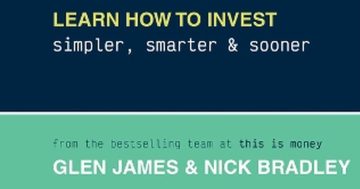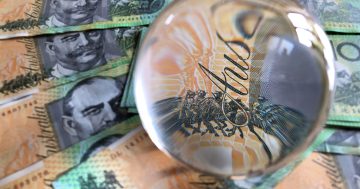Nicole Pedersen-McKinnon* looks at the benefits of investing in Exchange Traded Funds (ETFs).
 One of the questions I am asked most often is: Do I need to bother investing when my superannuation is ticking away in the background?
One of the questions I am asked most often is: Do I need to bother investing when my superannuation is ticking away in the background?
My answer is always: “It might be ticking away but it’s also locked away.”
There are rules about how and crucially when you can withdraw super.
If you were born after July 1, 1964, that’s not until age 60.
Which rules out early retirement…
Which rules out taking a year off to travel the world…
Which rules out anything you want to do that involves stopping work… until your retirement.
A ‘fun fund’ you can access when – to go where – you like, could be life changing.
But how do you do this when you may have limited knowledge about (and let’s face it time for) investing?
The good news is there is a sure shortcut to investing like a pro.
The shortcut to investing like a pro
An investment innovation conceived of in the Northern Hemisphere and now firmly entrenched here, allows private investors to access the exact returns of a market, with only a small amount of money.
Previously, you would have needed an impossible amount of dosh to ‘buy the market’.
Now, you can get easy exposure to a spread of investments large enough to ensure that if one stock in a portfolio goes significantly down, the others can buoy it up… and diversify the way a professional fund manager would.
How? Via a product called exchange traded funds (ETFs).
In fact, the ABCs of ETFs are really ‘access’, ‘breadth’ and (low) ‘cost’.
The ABCs of ETFs
Firstly – yes – you get to access an entire market.
You can also often access specific sectors within a market.
And ETFs let you buy into overseas markets at the click of a mouse too.
You see, ETFs trade exactly like shares – you buy and sell them through any online broker as they are listed entities just like individual company stocks.
That means, to diversify further, you can also simply buy a raft of ETFs.
For example, you could buy an ETF over the S&P/ASX 200 Index of Australia’s leading shares.
You could buy an ETF over the Small Ordinaries Index of Australia’s – you guessed it – smaller shares.
You could then, say, buy an ETF constructed purely for yield, so one holding the stocks that pay the highest dividends relative to their share prices.
And that’s where the ‘B’, or the ‘breadth’, comes in.
You can achieve instant diversification, regardless of the amount you have to invest.
Indeed, as with any other share, you could start picking up parcels with as little as $500.
Talking a bit more about ‘breadth’, as what are called ‘passive’ investments, no fund manager makes active decisions about what goes into an ETF.
It’s decided purely on the basis of the stocks that are constituents in the index you buy.
But note there are exceptions where investment analysts may select a group of stocks deemed to fit a particular purpose.
That possible yield ETF mentioned earlier? It would be made up of companies chosen based on the highest yielding stocks at a particular moment.
Which brings us to the ‘C’ or (low) ‘cost’ feature of ETFs.
Because ETFs are simply split into individual shares, like a company is, you pay only the standard brokerage to transact in them.
It gets better, too.
Because there really is no management of the fund, being (mostly) passive investments, the inbuilt management fees are miniscule.
This is why you can enjoy the exact returns of a market or index.
Or extremely close to those exact returns.
How much ETFs could be worth
Need a final reason to investigate ETFs?
An achievable long-term average return from the sharemarket is eight per cent.
If you invest just $6 a day from age 20 until pension age at 67 (that’s pension age for people born after 1957), you will retire a millionaire.
Better still, only about $100,000 will have come out of your pocket.
Some $900,000 will be from investment returns.
So really ‘free’ money.
The time to start investing (safely) is today.
*Nicole Pedersen-McKinnon is a financial educator and commentator, and the author of How to get mortgage-free like me.
This article first appeared at au.finance.yahoo.com.











